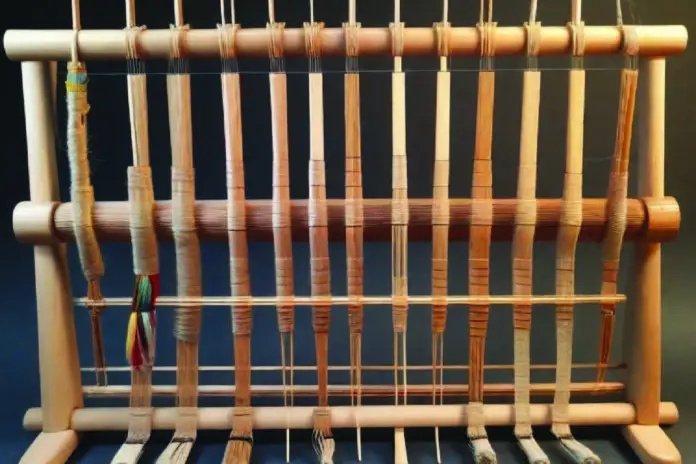Spinning is the process of converting fibers into yarn while weaving is the process of interlacing yarns to create a fabric. Spinning and weaving are two distinct processes in the textile industry.
Spinning involves the conversion of fibers, such as cotton or wool, into yarn by twisting and drawing them out. This process helps to increase the strength and uniformity of the fibers. On the other hand, weaving is the process of interlacing the yarns on a loom to create a fabric.
It involves the crossing of the horizontal (weft) and vertical (warp) yarns to produce different patterns and textures. While spinning prepares the yarn, weaving transforms it into a final textile product. Understanding the difference between spinning and weaving is essential for anyone working in the textile industry or simply interested in the intricacies of fabric production.
Spinning:
The process of spinning in textile manufacturing plays a crucial role in transforming fibers into yarns, which are then used to create fabrics. Spinning can be defined as the process of twisting and drawing out fibers to form continuous strands, making it ready for weaving. Its historical significance dates back to ancient civilizations, where early humans used manual methods to create yarn. As technology advanced, mechanical spinning techniques were introduced, revolutionizing the textile industry. Hand spinning involved spinning wheels or drop spindles, where the spinner manually manipulated the fibers using their hands.
On the other hand, mechanical spinning involves using machines like ring spinning or open-end spinning systems to produce yarn at a much faster rate. Spinning plays a vital role in the textile industry as it determines the quality, strength, and texture of the final fabric. Hand spinning allows for more creativity and control over the yarn, making it suitable for artisanal or specialized productions. Mechanical spinning, on the other hand, offers higher productivity and consistency, making it ideal for large-scale manufacturing. In summary, spinning encompasses various techniques that have evolved over time, enabling the production of yarns through manual or mechanical means. Both methods have their own benefits and are used according to specific requirements in the textile industry.
Weaving:
Spinning and weaving are two distinct processes in textile production. Spinning involves turning raw fibers into yarn, while weaving involves interlacing the yarn to create fabric. These techniques differ in their objectives and methods, contributing to the overall production of textiles.
Key Differences Between Spinning And Weaving:
Spinning and weaving are two distinct processes involved in the production of textiles. Spinning involves the conversion of raw fibers into yarn, while weaving is the interlacing of yarns to create fabric. When it comes to the role of fibers, spinning requires fibers to be stretched, twisted, and spun together to form yarn. Weaving, on the other hand, relies on the alignment and interlacing of yarns to create a cohesive fabric. Both spinning and weaving play a crucial role in garment production. Spinning provides the essential material required for weaving, as yarns are woven together to form the fabric. This fabric is then used to create various garments.
In terms of efficiency and scalability, spinning is generally more scalable than weaving. Spinning machines are capable of producing large quantities of yarn at high speeds, making it suitable for mass production. Weaving, on the other hand, involves the time-consuming process of interlacing yarns, making it less efficient for large-scale production. As for application areas, spinning is primarily used in the production of yarn for textiles, while weaving is used to create the final fabric for various applications such as clothing, upholstery, and home furnishings.
Frequently Asked Questions
What Is The Difference Between Spinning And Knitting?
Spinning is the process of creating yarn by twisting fibers together, while knitting is the act of using two or more needles to interlock a continuous strand of yarn to create fabric.
What Did Spinning And Weaving Do?
Spinning and weaving enabled the production of textiles by turning fibers into thread and then fabric.
Is Spinning And Weaving Still Used Today?
Yes, spinning and weaving are still widely used today for various purposes. From clothing to household textiles, these traditional techniques continue to be practiced, combining tradition with modern technology to meet the demands of contemporary society.
What Is The Difference Between Spinning And Yarn?
Spinning is the process of converting raw fibers into yarn, while yarn is the product of spinning process. Spinning involves twisting the fibers together to create a continuous thread, which is then used to make fabric or garments. Yarn, on the other hand, is the thread-like substance that is woven or knitted to make various textiles.
Conclusion
Spinning and weaving are two closely related processes that play a crucial role in textile production. While spinning involves converting fibers into yarn, weaving involves interlacing these yarns to create fabric. Whether it’s the traditional techniques or modern machinery, both processes require skill and precision.
Understanding the difference between spinning and weaving is essential for appreciating the intricate art of textile production. So next time you slip into a cozy sweater or wrap yourself in a soft blanket, take a moment to acknowledge the craftsmanship involved in bringing fabrics to life.













